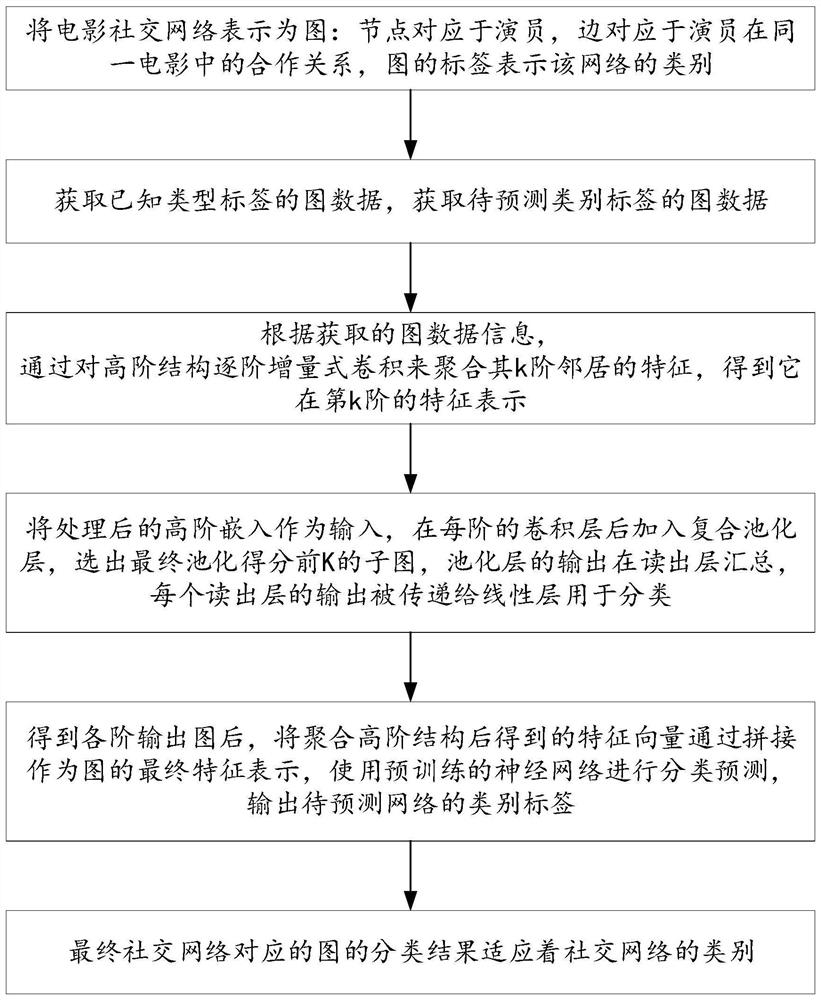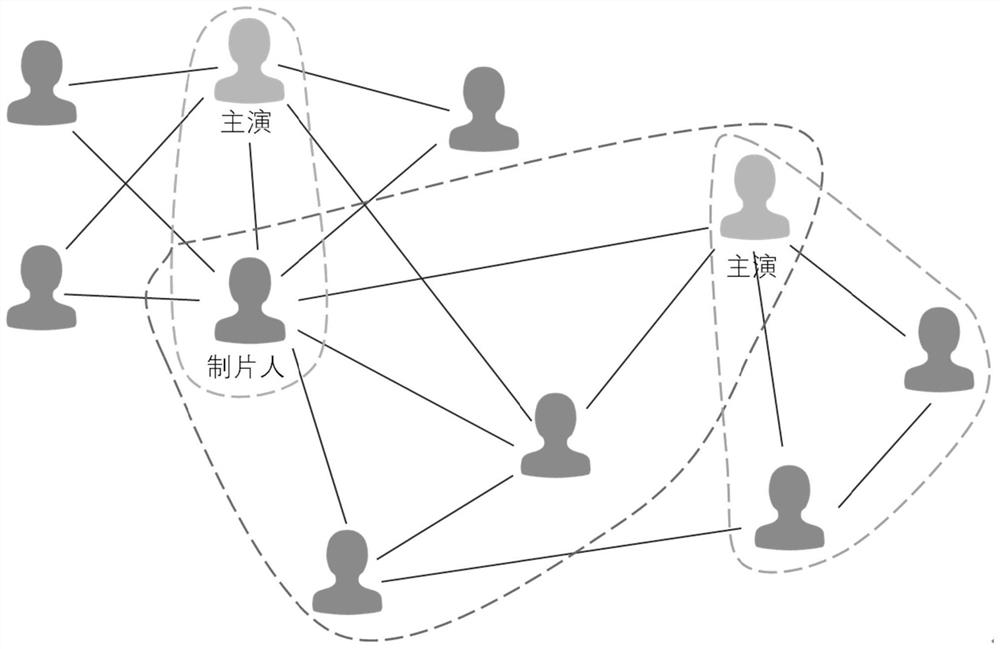Graph classification method and system fusing high-order structure embedding and composite pooling
A classification method and high-level technology, applied in the field of graph classification integrating high-order structure embedding and compound pooling, can solve the problems of not explicitly considering simultaneously, lack of attention to high-order graph structure information, and failure to consider structure information.
- Summary
- Abstract
- Description
- Claims
- Application Information
AI Technical Summary
Problems solved by technology
Method used
Image
Examples
Embodiment 1
[0037] This embodiment provides a graph classification method integrating high-level structure embedding and composite pooling, which specifically includes the following steps:
[0038] Step 1: Obtain the graph data of known category labels, and obtain the graph data to be classified;
[0039] Specifically, a graph data is node data and node relationship data (edges), which constitute the nodes and edges of the graph. For classification applications, a graph data with a known class label corresponds to a label graph (G, y), where graph G=(V, E), V(G) represents a set of nodes, and a node is an entity in the graph, E(G) represents the set of edges. If there is an edge between two nodes, it means that the two entities corresponding to the node are related, and y is the label corresponding to the graph.
[0040] Specifically, the graph is a network graph, for example, the graph may be a social network graph (movie social network graph) related to movie cooperation. A node in a ...
Embodiment 2
[0091] This embodiment provides a graph classification system integrating high-level structure embedding and compound pooling, which specifically includes the following modules:
[0092] an acquisition module, which is configured to: acquire the graph to be classified;
[0093] A classification module, which is configured to: input the graph to be classified into the graph neural network to obtain the category to which the graph belongs;
[0094] Among them, the graph neural network includes a readout layer, a classifier, and multiple layers of neural network layers connected in sequence, and each neural network layer is composed of a convolution layer and a composite pooling layer connected in sequence; for each subgraph set of the graph , each convolutional layer calculates the features of each subgraph based on the subgraph set output by the previous neural network layer, and each layer of composite pooling layer updates the subgraph set based on the features of each subgra...
Embodiment 3
[0097] This embodiment provides a computer-readable storage medium on which a computer program is stored, and when the program is executed by a processor, implements the graph classification method for integrating higher-order structure embedding and composite pooling as described in the first embodiment above A step of.
PUM
 Login to View More
Login to View More Abstract
Description
Claims
Application Information
 Login to View More
Login to View More - R&D
- Intellectual Property
- Life Sciences
- Materials
- Tech Scout
- Unparalleled Data Quality
- Higher Quality Content
- 60% Fewer Hallucinations
Browse by: Latest US Patents, China's latest patents, Technical Efficacy Thesaurus, Application Domain, Technology Topic, Popular Technical Reports.
© 2025 PatSnap. All rights reserved.Legal|Privacy policy|Modern Slavery Act Transparency Statement|Sitemap|About US| Contact US: help@patsnap.com



